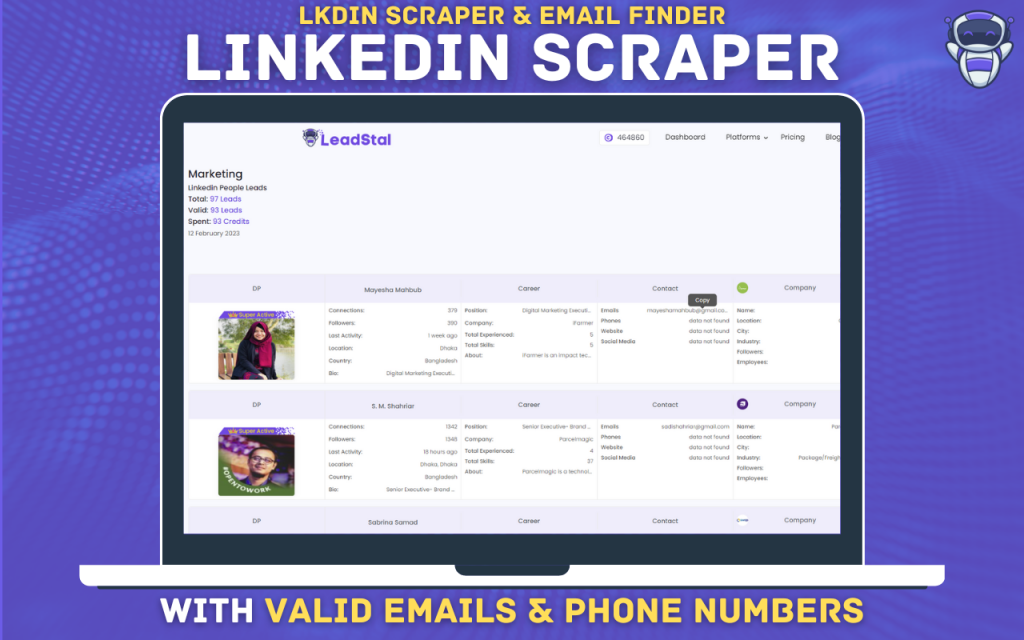LinkedIn scrapers have become indispensable tools for professionals seeking to harness the wealth of information available on the platform. However, as with any data scraping activity, there are legal considerations and potential pitfalls to be aware of. In this article, we’ll explore the legal aspects of LinkedIn scraping and how to navigate them responsibly.
LinkedIn’s User Agreement and Scraping
LinkedIn’s User Agreement explicitly prohibits scraping or automated access to its website without prior written permission. This means that, technically, scraping LinkedIn data without permission is a violation of their terms of service.
Respecting Privacy and Consent
Beyond LinkedIn’s terms, it’s essential to respect users’ privacy and obtain their consent when appropriate. Scraping private or sensitive information without consent can have legal repercussions and damage your professional reputation.
Copyright and Intellectual Property
While LinkedIn profiles are public, the content within them may still be protected by copyright or intellectual property laws. Using scraped data for commercial purposes, such as reselling it or publishing it without proper attribution, can lead to legal issues.
The Importance of Data Privacy Regulations
Depending on your location and the location of the LinkedIn How To Scrape Emails From LinkedIn you’re scraping, you may also need to consider data privacy regulations like the General Data Protection Regulation (GDPR) in the European Union. These regulations impose strict requirements on the collection, processing, and storage of personal data.

LinkedIn’s Reaction to Scraping
LinkedIn actively monitors and takes action against scraping activities that violate its terms of service. This can result in temporary or permanent suspension of your account or legal action.
Best Practices for Responsible Scraping
Seek Permission: If you plan to scrape LinkedIn for commercial purposes, consider reaching out to LinkedIn for permission or use authorized APIs if available.
Respect Robots.txt: Check for the presence of a “robots.txt” file on LinkedIn’s website, which may provide guidelines on what can and cannot be scraped.
Anonymize Data: When using scraped data, ensure it is anonymized and does not identify individuals directly.
Stay Informed: Keep up to date with changes in LinkedIn’s terms of service and any legal developments related to web scraping.
In conclusion, while LinkedIn scraping can be a valuable tool for professionals, it’s essential to navigate the legal landscape carefully. Always respect LinkedIn’s terms of service, seek permission when necessary, and prioritize data privacy and consent to avoid potential legal issues and reputational damage.
